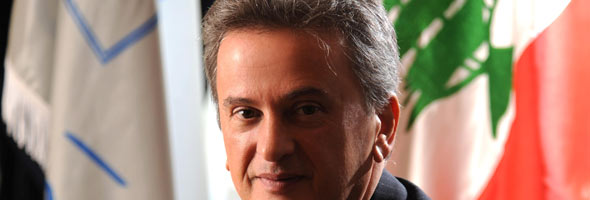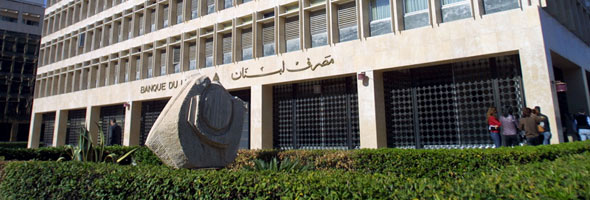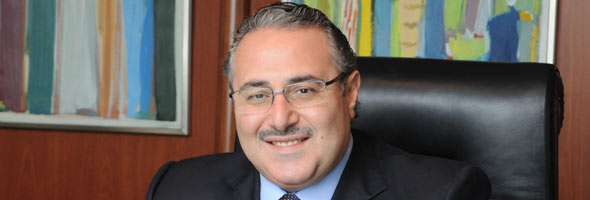Lebanon Banking: Analysis of Lebanese Banking Sector
The banking sector in Lebanon is one of the strongest in the region, based on solid fundamentals namely high liquidity, strict and stringent regulation by the central bank and strong policies that have been evolving in line with market needs and trends. The sector represents the backbone of the Lebanese economy Mohammed Hariri , president and CEO of BankMed
Banking and Finance
Banking is the key sector of the Lebanese economy, accounting for 35% of GDP growth. It is also the sector most representative of the history, culture, and talents of the Lebanese people. In any discussion of Lebanese banking, says Nadim Ghantous , Country Manager of Arab Bank, “It is important to keep in mind that Lebanese banks are run by families although their shares are still publicly traded. This means that the banks are managed more conservatively and with a careful approach, and this has protected them from the most recent global financial crisis.”
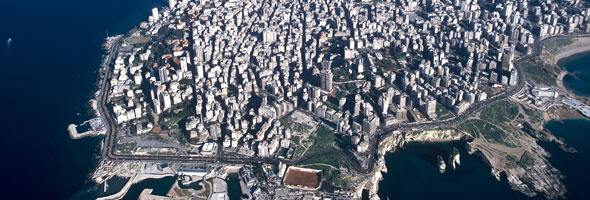
The Sky is the Limit for Lebanese Banking Sector
Although many international banks have recently entered Lebanon, the innate prudence that comes from centuries of banking experience still guides the entire economy. This is because banking and financial services are the mainstay for almost every other sector. Thus, Lebanon can afford a large imbalance of imports over exports to support the tourism, construction, and retail sectors because the inflow of capital into the banking sector far outweighs it, resulting in a high overall balance of payments surplus.
The high level of national debt, which in 2007
was 186% of GDP, was reduced to only 147%
of GDP, simply by a growth of the economy by 26%,
which was largely fueled by growth in the banking sector.
The current government budget deficit of almost 11% for 2010 is not a problem as it is in many other nations of the world because of the high liquidity of the banks.
Dr. Freddie Baz , CFO and Strategy Director of Bank Audi, recounts the role that banking has played in the recent stunning growth of Lebanon’s GDP.
“Over the past three years, Lebanon has recorded cumulative real GDP growth of 26% that was coupled with a significant corollary rise in major banking aggregates. Consolidated bank assets grew from 74 billion dollars to 115 billion dollars between 2006-2009, a growth of 55%. The banking system continues to benefit from a solid regulatory environment and conservative banking practices. Our liquidity for instance remains one of the highest worldwide with primary liquidity representing nearly 50% of customers deposits. The 2010 outlook remains quite favorable with continuing strong capital inflows towards the country and persisting growth of banking activity at large.”
It is well to note how strongly this growth is continuing. In the first four months of 2010 alone, consolidated bank assets have grown 4.7%, from 115.3 billion to $120.6 billion—which the MENA Weekly Monitor (#19) describes as a “a progression about three times higher than that of similar periods of the past five years.” One of the benefits of this growth is that this inflow also results in a record balance of payments surplus, which is consequently available to finance investment and government projects .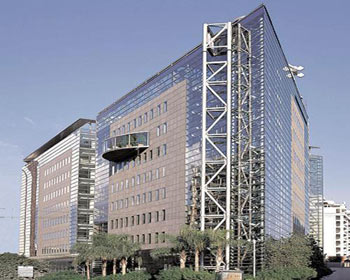
This centuries-old prudence and wisdom of Lebanese bankers has been tested in fire through two developments over the past third-of-a-century. These were the civil war period lasting from 1975 to 1990, and the world financial crisis of 2008.
Prior to the civil war Lebanon was definitely the chief banking center of the Middle East . The turmoil of the fifteen-year civil war forced many regional banks to move their headquarters elsewhere. But during the civil war Lebanon’s banks managed to function and grow despite the difficulties, and as soon as the war was over Lebanon’s banks showed remarkable growth.
Dr. Makram Sader, Secretary General of Association of Banks in Lebanon, explains: “Our bankers are used to managing their banks under unusual circumstances because we have been doing this since 1975 due to regional wars, internal political troubles, and even civil wars. From all of these crises we have been able to learn a lot.”
The next test came with combined effects of the domestic turmoil of 2005-08, the Israeli invasion of 2006, and the world financial crisis of 2008. Any one of these, let alone all three, would have caused most other economies major difficulties. But Lebanon’s banking system came through them with flying colors.
“Lebanon ‘immune’ to financial crisis”
reads the BBC News headline of December 5, 2008, of an article reporting, “The world maybe in meltdown but Beirut is booming. The country best known for wars, turmoil and instability has not just survived the global financial crisis, it seems to be thriving because of it.
Riad Salameh, Governor of the Central Bank of Lebanon is universally given credit for the Lebanese banking system avoiding investment in the toxic assets that brought about the world financial crisis of 2008. He recently reported that the country’s “banking sector was stronger than at any time before, and prone to pursue the policies that have protected this sector.“
The success of the Lebanon banking sector has been By far, the most important sector of the Lebanese economy is banking, which is responsible for the largest part of GDP. Banking is the largest sector, contributing more to both the GDP and to employment than any other sector. Banking occupies a position of both importance and honor over any other sector of the economy. Banking and finance hold the highest position in Lebanon in terms of share of GDP, share of labor in the services sector, and in terms of growth.
BankMed Leading the Lebanese Banking Sector
A good example of the vitality of the banking sector is BankMed, one of the top five banks in Lebanon. Founded in 1944, its assets comprise around 10% of the total of the Lebanese banking system. With 51 branches in Lebanon, one in Cyprus, and a private banking Switzerland (BankMed Suisse) for asset management , BankMed’s total profits in 209 were $90.7 billion.
But, according to Mohammed Hariri, president and CEO of BankMed ,
|
Get the Flash Player to see this player.
|
“catering to our customers’ financial services needs is not only our approach to doing business; it also encapsulates BankMed’s commitment to adding value to society and giving back to the country we are proud to be based in. In 2009, BankMed launched the “Happy Planet” campaign, one of the main pillars in its environmental sustainability vision. Through various environmentally friendly initiatives – implemented both in-house and externally – including reforestation, education/training, public clean-ups and other such projects BankMed is taking the lead in Lebanon in the global fight against climate change and global warming. One of BankMed’s most notable environmental sustainability initiatives is its project to become the first Lebanese Bank to be certified as carbon neutral. After assessing and measuring its Corporate Headquarters carbon footprint, BankMed purchased Verified Emission Reductions (VERs) to offset its own carbon emissions, encourage new eco-friendly technologies and simultaneously contribute to the sustainable development of small communities in developing countries. In this regard, BankMed’s pioneering vision is a model for carbon footprint balancing in the Middle East financial sector.”
But BankMed is not concentrating on marketing.
“BankMed understands that the globalization of financial services is an irreversible trend…Well planned vertical integration and carefully considered horizontal expansion will continue to define BankMed’s strategy to create a more successful business enterprise,” says Hariri. He explains: “BankMed is part of a bigger family group that has an established presence on the five continents of the globe through its various businesses in the construction, telecommunications, banking, operation & maintenance, utilities, insurance, printing and real estate sectors. Chief amongst them is: Saudi Oger Ltd., a major Middle Eastern conglomerate established in 1970 in the Kingdom of Saudi Arabia. Its investments include Oger Telecom, headquartered in Dubai, a leading telecommunications services provider operating in the emerging markets, namely Turkey and South Africa, in addition to MedGulf, one of the largest insurance providers in the region.”
